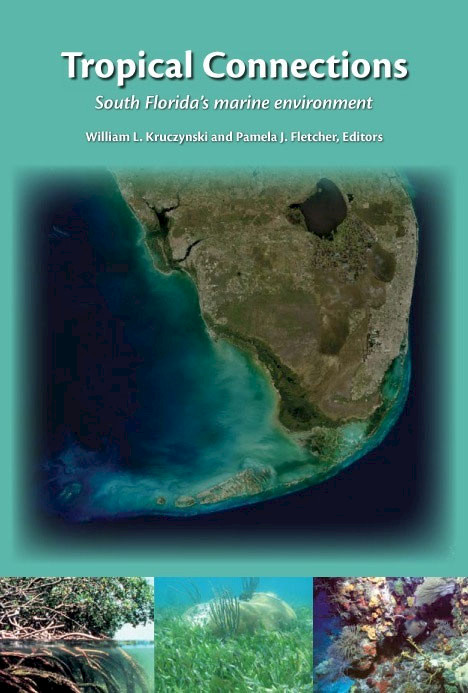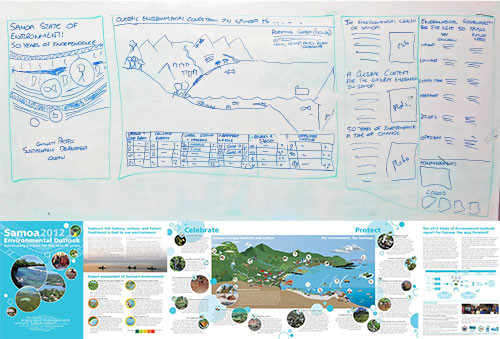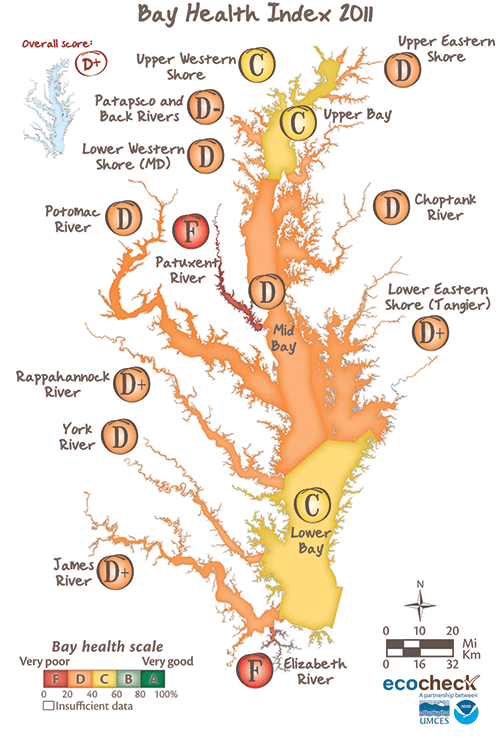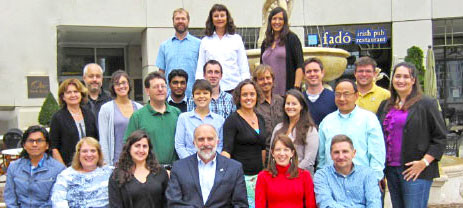Scientific synthesis at the University of Maryland Center for Environmental Science: Part 3--Integration and Application Network approach to synthesis
Bill Dennison ·This post is part three of a four part series on scientific synthesis.
The Integration and Application Network (IAN) was created to facilitate scientific synthesis as part of science applications. In many respects, the linking of integration with application is crucial, and IAN projects tend to use synthesis in order to create effective applications. The IAN approach to synthesis is similar to the previous blogs (Parts 1 & 2 of this series) in many ways: identifying the issue, assembling the data, analyzing and interpreting the data, drawing inferences and communicating the findings. The differences in the IAN approach versus the approach taken by the various synthesis centers and the scientific syntheses targeted for scientific audiences is that the IAN approach is to rapidly produce public friendly synthesis products (books, brochures, newsletters, websites) rather than the more deliberate peer review papers. IAN scientists do produce peer review publications, but as a secondary product as a means of disseminating frameworks and approaches, rather than reporting data.
Scientific communication has important differences from science writing. In science communication, the focus is on societal context and examples, rather than scientific references. In addition, science communication is aimed at a wide audience, a much broader audience than focusing on peer scientists. The extensive use of color graphics also distinguishes science communication, and the text attempts to minimize jargon, acronyms and other literary devices that narrow the audience. The focus in science communication is on conclusions and the recommendations that can be explicitly linked to these conclusions. In science writing, the focus is more on the results and interpretation of those results.
IAN-led synthesis involves typically bringing together relevant experts in a series of workshops to storyboard the science communication product(s), and then have the team of Science Integrators and Science Communicators work with a variety of scientists to produce the final products. While synthesis papers from the National Center for Ecological Analysis and Synthesis have an average of 6 authors, the various IAN synthesis products have dozens of authors. In fact, the most recent IAN Press book, Tropical Connections, has 157 authors. This inclusive authorship is characteristic of IAN Press publications.

When we teach science communication courses through IAN, many of the exercises and approaches that we espouse involve synthesis activities. For example, the development of active titles--short declarative statements that capture the essence of an issue--is a synthesis exercise. The creation of conceptual diagrams involves synthetic thinking, and choosing symbols and defining relationships in a diagram prioritizes and synthesizes at the same time. Developing storyboards--layouts of text and visual elements to support a thesis--is very synthetic by nature. Choosing which photographs, diagrams, maps, graphs and tables to combine with text, and how to arrange these different elements onto either printed or electronic products is a synthetic process.

One of the tools that IAN has pioneered is the use of environmental report cards to communicate environmental status and trends to wide audiences. The report cards that IAN produces are underlain by scientific data, with indicators, thresholds, combined indices and report card scores or grades used to synthesize large data sets. The transparency of the report cards relies on the availability if the underlying data and the methods of calculating report cards. The synthesis process involves working with various experts to choose indicators, set thresholds and develop calculation methodology.

Interdisciplinary synthesis is a crucial part of IAN activities, since the focus on environmental solutions typically involves input from many different disciplines. While synthesis within various disciplines can deepen an understanding of the topic, and is very worthwhile, environmental issues typically span different disciplines, necessitating an interdisciplinary approach. There are some key elements of the IAN approach to interdisciplinary synthesis. 1) The production of conceptual diagrams that incorporate the best scientific understanding of an issue or ecosystem relies on input from multiple disciplines. 2) Interdisciplinary storyboard workshops provide a mechanism to gather relevant concepts and supporting information from a variety of experts. 3) A focus on the science communication product drives a highly collaborative process, with the limited 'real estate' of the layout helping to prioritize the key scientific elements of different disciplines into a single, integrated product.
The business model of IAN that has developed is also quite different than that of typical scientific research organizations, with implications on the form of scientific synthesis that IAN produces. Instead of relying on responding to requests for proposals or applying for large foundation grants, IAN grants and contracts are typically initiated by an organization or agency with a need for science communication products which require synthesis. IAN staff respond, sometimes quite rapidly, to these requests and produce draft synthetic publications with best available information. Further iterations of the publications involve increasing numbers of reviewers and improved versions of graphical elements (e.g., photographs, figures and maps). This business model gives IAN new challenges in a variety of settings globally, requiring an immersive learning experience working with scientific experts to generate synthetic products.

About the author
Bill Dennison

Dr. Bill Dennison is a Professor of Marine Science and Vice President for Science Application at the University of Maryland Center for Environmental Science.